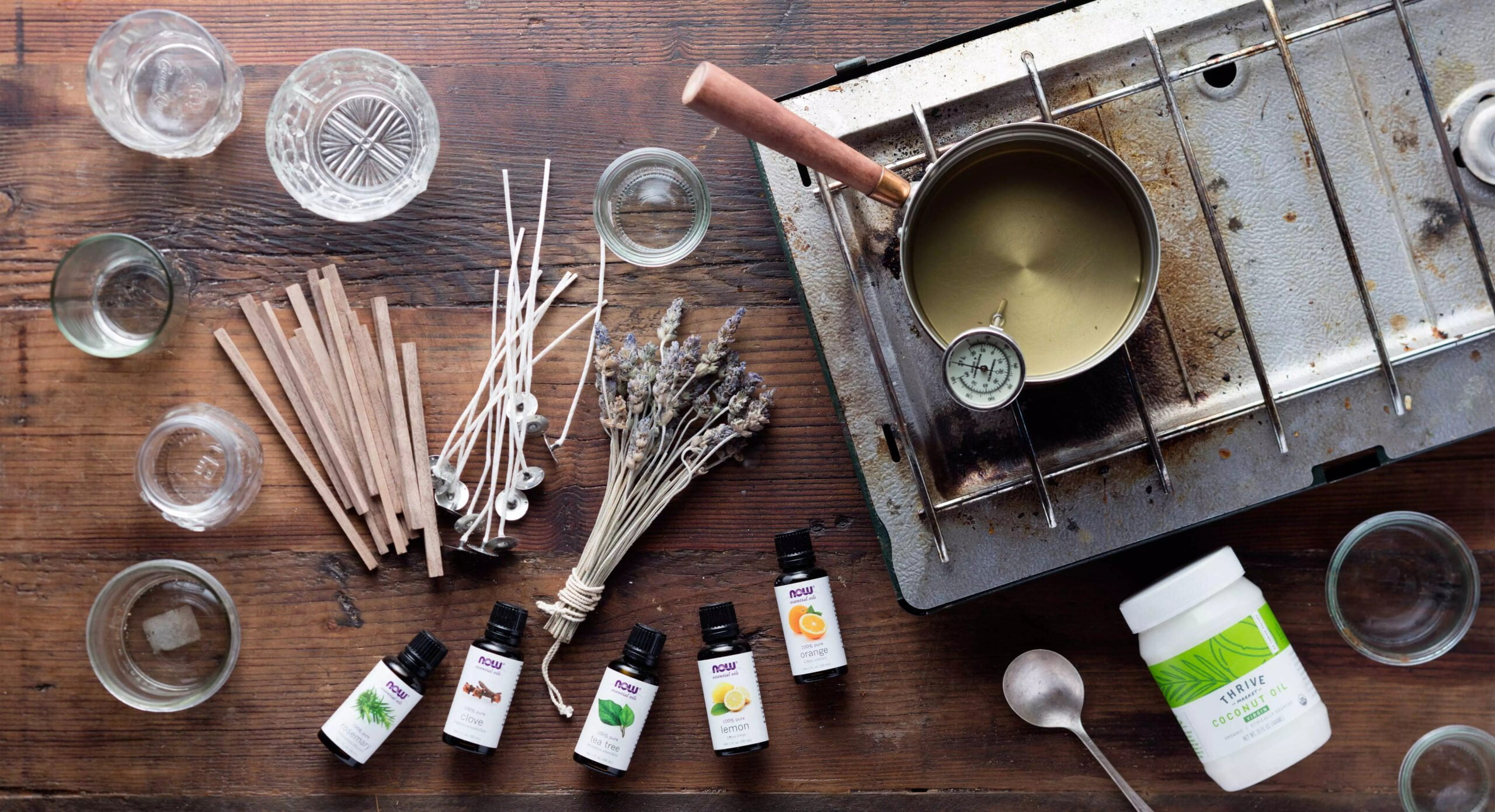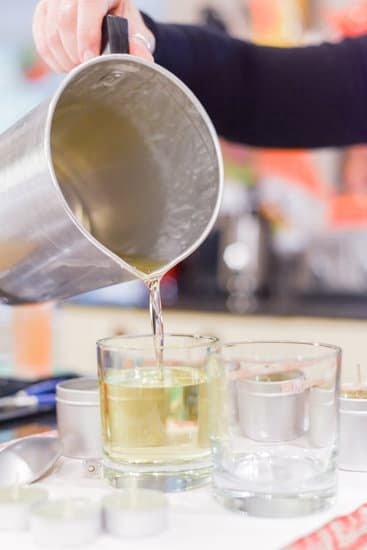Candle making has become increasingly popular in recent years, with many people drawn to the therapeutic and creative benefits of crafting their own candles. The growing interest in do-it-yourself (DIY) projects has also contributed to the resurgence of this age-old craft. If you’re interested in trying your hand at candle making, this article will provide you with all the information you need to get started, including a free candle making PDF download.
There are numerous benefits to making your own candles. Not only is it a creative outlet, but it can also be a relaxing and meditative process. Many people find that the act of melting wax, adding fragrances, and pouring the hot liquid into molds is a soothing and stress-relieving activity. Additionally, homemade candles can be customized to suit your preferences, whether you prefer natural scents or vibrant colors.
In the following sections, we will cover everything from basic materials and tools needed for candle making to safety precautions when working with hot wax and open flames. We will also explore different types of wax and their unique properties for candle making, as well as tips for adding fragrance and color to your candles.
And don’t forget to check out our free downloadable PDF with beginner-friendly candle making instructions and tips – it’s everything you need to embark on your candle-making journey.
Benefits of Candle Making
Candle making is not only a fun and creative hobby, but it also offers numerous therapeutic and mental health benefits. Many people find the process of making their own candles to be relaxing and stress-relieving.
This hands-on activity allows individuals to focus on the present moment, which can help reduce anxiety and promote mindfulness. The repetitive nature of candle making can also have a soothing effect on the mind, making it a great way to de-stress after a long day.
In addition to its therapeutic benefits, candle making also provides a creative outlet for self-expression. From choosing unique fragrances to creating custom color combinations, DIY candle makers have the freedom to experiment and personalize their creations according to their preferences. This allows for a sense of accomplishment and pride in the finished product, boosting one’s creativity and confidence. The act of gifting homemade candles to friends and family members can also bring joy and strengthen social connections.
For those interested in exploring the world of candle making further, there are numerous resources available to help beginners get started. One such resource is the free Candle Making PDF download offered by experienced crafters. This downloadable guide provides step-by-step instructions, useful tips, and insights into the art of candle making for those who are just starting out on their DIY journey.
| Therapeutic Benefits | Creative Benefits |
|---|---|
| Relaxing and stress-relieving | Self-expression through unique fragrances and colors |
| Promotes mindfulness and reduces anxiety | Boosts creativity and confidence |
| Soothing effect on the mind | Strengthens social connections through gifting |
Getting Started
When starting out with candle making, it’s important to have the right materials and tools to ensure a successful and enjoyable experience. Here is a step-by-step guide on the basic items you will need to begin your candle making journey:
1. Wax: The most essential component of candle making, wax comes in various types such as paraffin, soy, beeswax, and more. Each type has its own unique properties and melting points, so it’s important to choose the right wax for your specific candle making needs.
2. Wicks: Wicks are the string-like components that provide fuel for the flame in a candle. They come in different sizes and thicknesses depending on the type of candle you want to create. It’s crucial to select the correct wick size for the diameter of your container or mold.
3. Containers/Molds: Depending on the type of candles you want to make, you’ll need containers or molds to pour your melted wax into. Popular choices include mason jars, tins, and silicone molds. Make sure they are heat-resistant and suitable for candle making.
4. Double Boiler/Flexible Pouring Pitcher: To melt your wax safely and evenly, a double boiler or flexible pouring pitcher is essential. This tool allows you to heat your wax gently without direct contact with an open flame.
5. Thermometer: A thermometer is necessary for monitoring the temperature of your melted wax. Different waxes require different pouring temperatures for optimal results, so having a reliable thermometer is crucial.
6. Fragrance Oils/Essential Oils (optional): If you want scented candles, fragrance oils or essential oils can be added to create pleasant aromas when burning your candles.
With these basic materials and tools in hand, you’ll be well-equipped to start creating beautiful homemade candles at home. For more detailed instructions and tips on getting started with candle making, be sure to download our free candle making PDF guide today.
Remember that safety is always a priority when working with hot wax and open flames, so always follow best practices and take necessary precautions throughout the process. Happy candle making.
Choosing the Right Wax
When it comes to candle making, the type of wax you choose can significantly impact the quality and characteristics of your final product. There are several types of wax available for candle making, each with its own unique properties and benefits. Understanding the different types of wax can help you make an informed decision that aligns with your preferences and needs.
Paraffin Wax
Paraffin wax is one of the most popular choices for candle making due to its affordability and ease of use. It has a high fragrance load capacity, meaning it can hold a large amount of scent, making it ideal for scented candles. However, paraffin wax is derived from petroleum, which may be a drawback for environmentally conscious individuals.
Soy Wax
Soy wax is made from soybean oil, making it a natural and renewable resource. It burns cleaner and slower than paraffin wax, resulting in a longer-lasting candle. Additionally, soy wax has excellent scent throw and can hold fragrance oils well. For those looking for an eco-friendly option, soy wax is an excellent choice.
Beeswax
Beeswax is a natural byproduct produced by honeybees and is known for its natural aroma and clean burn. It has a high melting point, which makes it suitable for warm climates. Beeswax candles have a beautiful natural color and emit a subtle honey-like scent when burned. While beeswax may be more expensive than other waxes, its unique properties make it a popular choice for many candle makers.
Choosing the right wax for your candles is crucial in achieving the desired results. By considering factors such as scent throw, burning time, environmental impact, and cost, you can select the best type of wax to create beautiful and fragrant candles at home. For beginner-friendly instructions on how to work with different waxes and create your own customized candles, be sure to check out our free candle making PDF download.
Adding Fragrance
When it comes to candle making, one of the most popular aspects is adding fragrance to your candles. The sense of smell is powerful and can evoke memories and emotions, making scented candles a popular choice for many.
In this section, we will discuss the different options for adding fragrance to your candles, including essential oils and fragrance oils. Whether you prefer a subtle or strong scent, there are various tips and tricks that can help you achieve the perfect aromatic candle.
Essential Oils vs. Fragrance Oils
One of the first decisions you’ll need to make when adding fragrance to your candles is whether to use essential oils or fragrance oils. Essential oils are natural, plant-derived oils that offer a more subtle and authentic scent.
On the other hand, fragrance oils are synthetic and offer a wide range of scents that may not be achievable with essential oils. It’s important to consider the benefits of each as well as any potential sensitivities or allergies when choosing which type of oil to use.
Choosing the Right Scent
When selecting a scent for your candle, it’s important to consider the purpose of the candle and the preferences of those who will be enjoying it. For example, soothing scents like lavender and chamomile are great for relaxation and stress relief, while invigorating scents like lemongrass and citrus can be uplifting. Experimenting with different scents can help you find the perfect fragrance for your candles.
Tips for Adding Scents
Once you’ve chosen your preferred oil, there are various methods for adding scent to your candles. Some may choose to add the fragrance directly into the melted wax before pouring it into the container, while others may prefer using fragrance load calculators to determine the appropriate amount of oil needed based on the type and amount of wax being used.
It’s crucial to follow proper measurements and guidelines when adding scents to ensure safety and optimal results in your candle making process.
Remember that this is just an overview – if you’re interested in delving deeper into this fascinating craft, consider downloading our free Candle Making PDF guide which offers beginner-friendly instructions along with additional tips on creating beautifully fragrant candles.
Coloring Your Candles
Adding color to your candles can be a fun and creative way to personalize your creations. There are several options for adding color to your candles, including dye chips and liquid dyes. Here is a step-by-step guide on how to effectively add color to your candles using these methods:
Using Dye Chips
- Choose your desired color of dye chip. Dye chips come in a variety of colors and are easy to mix to create custom shades.
- Melt your wax to the specified temperature according to the instructions for the type of wax you are using.
- Add the appropriate amount of dye chips based on the quantity of wax you are using. Be sure to refer to the manufacturer’s recommendations for guidance.
- Stir the dye chips into the melted wax until they are fully dissolved and the color is evenly distributed.
- Pour the colored wax into your candle mold or container and allow it to cool and set as usual.
Using Liquid Dyes
- Start by selecting the liquid dye color that you want for your candles. Liquid dyes offer more precision in color mixing and may be easier for beginners to work with.
- Similarly, melt your wax as per the manufacturer’s instructions and allow it to reach the specified temperature.
- Add a few drops of liquid dye into the melted wax, adjusting as needed until you achieve your desired shade. Remember that a little goes a long way with liquid dyes, so start with a small amount and gradually add more if necessary.
- Thoroughly stir the liquid dye into the wax until it is completely blended and no streaks remain.
By following these simple steps, you can easily add vibrant colors to your homemade candles using either dye chips or liquid dyes. Experimenting with different colors and combinations can help you create unique and visually appealing candles that reflect your personal style and creativity.
For more detailed instructions on coloring your candles, including additional tips and techniques, be sure to check out our free candle making PDF download. This comprehensive guide offers valuable insights for novice candle makers looking to enhance their skills in creating beautifully colored candles at home.
Safety Precautions
When it comes to candle making, safety should always be the top priority. Working with hot wax and open flames can present certain risks, but by following some simple safety precautions, you can minimize these risks and enjoy the process of creating beautiful candles without any worries.
One of the most important safety measures when working with hot wax is to use a dedicated melting pot or double boiler to melt the wax. Never heat the wax directly over an open flame as this can lead to fire hazards. It’s also crucial to have a fire extinguisher nearby in case of any accidents, as well as a first aid kit for handling minor burns.
In addition to working with hot wax, it’s essential to practice fire safety when dealing with open flames. Always keep flammable materials away from your work area, and never leave a burning candle unattended. If you’re using fragrance oils or essential oils in your candles, be sure to handle them carefully and store them away from heat sources.
Lastly, proper ventilation is key when working with hot wax and strong scents. Make sure your workspace is well-ventilated to prevent inhaling fumes from the melting wax or fragrances. By following these safety precautions, you can create beautiful candles in a safe and enjoyable manner.
| Safety Measure | Best Practice |
|---|---|
| Use a dedicated melting pot | Never heat wax over an open flame |
| Keep fire extinguisher nearby | Have first aid kit for minor burns |
| Practice fire safety | Never leave burning candle unattended |
| Proper ventilation | Prevent inhaling fumes from melting wax or fragrances |
Free Candle Making PDF Download
In conclusion, candle making is a wonderful and rewarding hobby that offers a creative outlet and therapeutic benefits. Whether you are looking for a new DIY project or want to create personalized gifts for your loved ones, making your own candles can be a fulfilling experience. With the right materials, tools, and guidance, anyone can indulge in the art of candle making.
One of the best ways to get started with candle making is by finding reliable resources that offer beginner-friendly instructions and tips. In addition to the step-by-step guide provided in this article, there are also free downloadable PDFs available online that can further enhance your candle making journey. These resources often include valuable information on choosing the right wax, adding fragrance and color to your candles, as well as important safety precautions to consider.
If you are interested in delving into the world of candle making, I highly recommend checking out a free candle making PDF download. This valuable resource not only provides in-depth instructions but also offers handy tips and tricks to help you create beautiful and fragrant candles with ease. By utilizing these resources, you can gain the confidence and knowledge needed to embark on your candle making adventure. So why wait? Start exploring the art of candle making today.

Welcome to my candle making blog! In this blog, I will be sharing my tips and tricks for making candles. I will also be sharing some of my favorite recipes.





